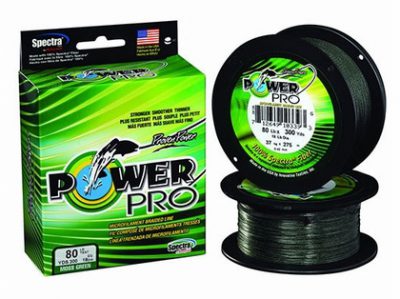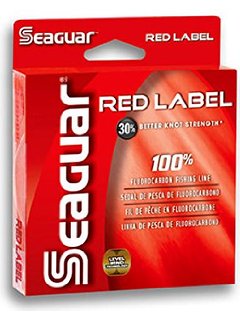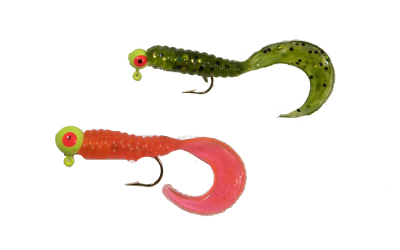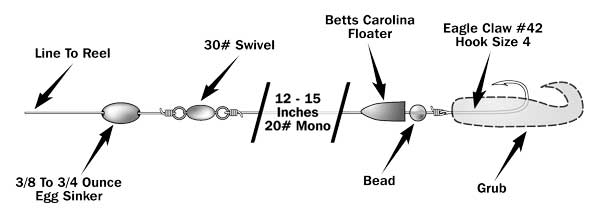Fishing for walleye in the Maumee River is unlike any other fishing experience you have ever had. The water is fast, can be deep, can be shallow, and changes throughout the day. The bottom is very rocky, there are tons of deep crevices and holes, and lots of buried timber and debris. You will snag and snag often. You will lose a lot of lures and jigs. Be prepared for this. What is the most effective and cost effective way to fish the Mighty Maumee?
The number one reason fisherman are unsuccessful in the Maumee is due to wrong equipment and wrong technique. So read below, so that you at least show up with the right equipment. Then read the techniques section later.
Rod
You will need a 6 to 7 foot rod that is medium to medium heavy with fast or extra fast action. A medium heavy will help you get the fish out quickly in high water and fast current. This is crucial, since you will have fisherman on either side of you and you don’t want the walleye to run and tangle lines. But even a medium rod will work with a higher reel gear ratio. The fast or extra fast action will help you feel the bites. Walleye bites are very soft and subtle so you will need very sensitive action.
A shorter 6 or 6.5 foot pole with medium action can help you in some tighter areas with less fishermen, and there are plenty of areas away from the crowds.
We like the Ugly Stix GX2. They cost around $39 and are capable and versatile. Their eyelets for fishing line are perfect for any kind of line, including braid. They have amazing feel and strength. You can feel everything on the river bottom. They come in 7 foot medium heavy and they have fast action. They are a bit heavy, but they are rugged and cheap and will work nicely on the river. Plus, if you lose one, no big deal. We like the amount of flex in the shaft, it really bows nicely and flexes nicely when casting to whip that heavy weight out pretty far.
Reels
Make sure you have a higher gear ration 5:1 or 6:1 or higher. You need to be able to bring those fish in quickly since it is so crowded and hectic. And keep your drag on high. You need at least 15 pounds of drag or more. Almost any modern reel will have enough drag, just crank it up. You are not here to “have a great fight” with the fish. This isn’t bass fishing on a big lake. This is walleye fishing on a crowded river with a few thousand fisherman standing shoulder to shoulder. Get your fish out!
We like almost all brands; Shimano, Quantum, Daiwa, Shakespear, Penn, Okuma, Pflueger, and Mitchell. It really doesn’t matter. Make sure it works, and don’t spend a fortune. Shimano and Mitchell seem to be the most reliable, smooth, and cost effective. But even the cheap reel that comes with the Ugly Stix GX2 works just as well.
Line
 You need two types of line. One braided line to be your main line on your reel and either a monofilament or fluorocarbon leader line at the end. The bottom of the river is very rocky and has deep crevices and very sharp stones (see our maps). If you use monofilament only, you will snag and be losing lures and jigs on every cast. You need to use braided line. If you aren’t using braided as your main line, you may as well not even show up. You will spend 98% of your day, retying jigs.
You need two types of line. One braided line to be your main line on your reel and either a monofilament or fluorocarbon leader line at the end. The bottom of the river is very rocky and has deep crevices and very sharp stones (see our maps). If you use monofilament only, you will snag and be losing lures and jigs on every cast. You need to use braided line. If you aren’t using braided as your main line, you may as well not even show up. You will spend 98% of your day, retying jigs.
Using braid will save you time and money. We were losing our jig on every second or third cast. Now we almost never lose the weight, and only lose the jig on every 20th or 30th cast. You have to make the switch. See below to see how we rig it up.
With braided line, you can feel the bottom of the river with great detail. It’s incredibly sensitive and gives you great feel. You will feel every nook and cranny on that shale river floor. It’s like having sonar on the bottom of the river.
We like Spectra’s Power Pro braided line. Use a 20 pound line as your main line. But almost any of the newer technology lines will work. We use the Moss Green, but they also have a high visibility yellow that some of our guys use. Spectra’s line seems to be the strongest, with the least stretch, and best floor feel of all the braided lines we’ve tried. We’ve gone as low as 15 pounds and as high as 30 pounds on the main line. The diameter is so small that you can still cast it very far. The nice thing about braid, is that you don’t have to change it every year. It lasts forever.
You will also need a fluorocarbon or monofilament leader. This allows the leader to break off if necessary without losing your weight and entire setup. Also this allows a little more stretch for the walleye to feel when they grab your jig. Walleye are very sensitive to how the food feels in their mouth and whether or not there is resistance.
Further, monofilament allows a little more give when you are setting the hook. Walleye have soft mouths, and if you go to set the hook with braided line, you will tear the mouth off the walleye. Monofilament also floats and helps the floating jig head stay afloat.
 We like Seaguar’s Red Label fluorocarbon. It’s supposed to be 30% stronger and allows for tighter and better knots. Trilene also makes a great mono. Don’t skimp on your mono. Mono is already very cheap.
We like Seaguar’s Red Label fluorocarbon. It’s supposed to be 30% stronger and allows for tighter and better knots. Trilene also makes a great mono. Don’t skimp on your mono. Mono is already very cheap.
Your mono leader needs to be 8-12 pounds. We normally use the 10 or 12 pound line. With 12 pounds you won’t lose as many fish. With 8 pound the floating jig has better action in the water. Make sure to tie your knots properly though. The number one cause of lost gear and lost fish is improper knot tying or wrong type of knot. See knot tying below. Anything heavier than 12 pound mono and your jig action won’t be right. Stay 12 or under.
Rigs and Jigs
Previously, everyone used lead jig heads that sank to the bottom and just jigged them off the bottom like lake fishing or bass fishing. Things have changed. We have found much better ways of enticing walleye to strike. Since 2005, most have switched to a modified Carolina rig with floating and lighter jig heads.
Although, walleye hover near the bottom, walleye don’t stay that close to the bottom and research has shown that they are more likely to strike at bait that is suspended above them or at their level. Hence, you will need to use a floating jig head.
Carolina Rig: Basic and Modified
The most common rig used today in the Maumee River, that produces the most fish, is the Carolina Rig. Except, that we modify it slightly to avoid snags, save money, and simplify the rig. As you can tell, we have huge snagging problems.
Basic Carolina Rig
But not the one we use on the Maumee. This is also way too complicated and has too many parts. You will be losing a lot of rigs, don’t spend a ton of time or a fortune making them.
Modified Maumee River Carolina Rig
The Modified and simpler Carolina Rig that works on the Maumee River is much simpler and looks like this:
It’s actually just an inline sinker with swivels on both sides. The rounder side connects to your braided line that goes back to your pole and the smaller side that looks like the tail of a comet goes to a floating jig head. Use the proper knots, so you aren’t losing your gear for no reason. If you have a poorly tied knot, even just the current can undo your knot. See knot section below.
You really need the dual swivels. With the fast current and twister tails spinning, sometimes the leader will wrap around the main line and cause it to fray and break off more easily. The dual swivels prevent this. Using a snag-free weight like a Lindy can cause line twisting.
On the Maumee River, you will need 1/2 to 3/4 ounce weights to get down to the bottom. If the current is fast and the water volume and flow are high, you may even need 1 ounce weights. When the water level is lower (582 or less), we use 3/8 oz instead.

The leader length that we use the most is 18-24 inches, sometimes even as long as 3-4 feet (but this becomes harder to cast). It just depends on the day and where you are fishing. But for 90% of the time a 18-24 inch leader is plenty. At the end we tie on a floating medium jig head and a 3 inch twister tail grub. Colors shown below.
If they are spitting your lures after a brief fight, downsize your grubs to 2 inch twister tails.
Lead Jig Heads
You can still use leaded weights and avoid the Carolina Rig altogether. Use enough weight on your jig head to get down to the bottom, and jig them up and down. Walleye will strike when they are floating back down and especially if you drop into a hole or crevice.
Another technique is to use lighter lead jigs and have them just flow downstream with the current and be suspended in the current.
Jig Head and Twister Tails
You need floating jig heads and 2-3 inch twister tails. The colors that work the best are yellows, greens, and reds. Chartreuse and pink are a great combination. Does color really matter? It’s hard to know. Visibility during the spring Maumee River Walleye run is zero to less than an inch. The fish are instinctively attacking anything that acts like and feels like food. They can’t really see it. But then you have stories of people switching colors and landing tons of fish. When the sun is high and bright and there is more visibility, they recommend using more natural looking bait colors (grey, black, silver, white). When the sun is lower on the horizons, you need to use the brighter colors (yellow, green, pinks/reds, Chartreuse). Walleye can see green/yellow more than any other color (hence, chartreuse is the most popular).
When you find a school of walleye and the bite is on, almost anything will work, just get it out there and get them in.

Knots
This is why 90% of tackle, fish, and gear is lost on the Mighty Maumee. There is no point in doing all of this if you can’t keep your jig or weight from popping off your line or your knot not holding properly. You need to know two basic knots.
The Palomar knot is used to tie braided line to one of the swivels on your weight. You can not use normal knots to tie braided line. This will work for braided and will never break.
Watch Palomar Animation
Watch Trilene Animation
Waders and Wading Technique
Do you need waders? Yes. You should get them. They aren’t very expensive. Sure you can fish from shore in most areas (see our maps), but to avoid the brush and debris near shore and reach the deeper inner channels you will need waders.
Get neoprene waders with about 200g of Thinsulate insulation. They should cost about $80-150 bucks at the most. Don’t go out and buy the $300 dollar waders. Waders will help keep you warm. Make sure they come with a wader belt to keep water out in case water does go above your wader height by accident or you fall in. Make sure you wear thick long johns underneath your thick sweat pants. Wear two layers of socks, thicker wool socks work really well. You will need two layers of everything especially when the water is colder than 48 degrees. Also wear multiple long sleeve shirts and coats.
We also recommend dropping the air activated heat pods into your waders. Push them up in the boot towards the toe area. If you are only staying in the water for an hour, this is not necessary (unless it’s really cold). But if you are going to be there for more than one hour and the water is colder, you really need these. Your legs usually can stay pretty warm with the two layers of pants/long johns, but the toes usually get cold quickly. Even if it’s 55 degrees out, if the water temperature is 38-40, your toes will freeze. Frostbite is not fun. If the water temperature is above 48 degrees, you will probably be ok without the heat pods.
Be very careful and shuffle your feet along the bottom. You can easily fall into a hole or drop off or trip over a buried rock. It’s very dangerous and happens every year. There are lots of quick drop-offs and deep holes. See our maps. Some people use a walking stick or skiing stick to help you poke around and wade safely. Don’t look down when you are wading, even if the water is clear and you can see the bottom. Learn to feel with your foot before you shift your weight to the forward leg.
Casting from shore gives you incredible distance and leverage. You have more space to work with and less people around you. When you are deep down in the river, it’s hard to make a proper, full overhand cast. But from shore, you can really launch it. With braided line and a 3/4 oz weight, you could cast 60-70 yards or more from shore if there are no obstructions and your leader line isn’t too long.
Baitcasters
You can use a baitcasting reel. You will have less casting distance, but you will be able to operate it with one hand easier while wearing thick gloves. You can also depress the button and let it drift downstream further if you decide to let more line out. It’s easier to do with one hand and gloves when it’s still cold out. Using a spinning reel with gloves is a lot harder, but can be done. We generally recommend spinning reels for most beginners.
Landing Net
You will need a net. Keep your pole high, scoop up the fish from behind, then bring it out above the water. Then unhook and measure the fish. You can’t keep anything under 15 inches.
Landing by Hand
Yes, you can do it. Hold your pole up high, once the walleye is up against your body, grab him from under his gills. Do not stick your hands in their mouth! They have teeth! They are walleye, not bass.
Stringer
Have a good quality stringer that is rust proof. You can keep your fish on it and safe until you are ready to leave.
Basic Rules
- Have a fishing license. Buy one online at: Ohio Wildlife License. They usually want to see the printed license, and it’s not enough to have the email receipt on your phone.
- No fishing after sunset or before dawn (check local times, usually about 7am till about 8pm depending on how early in February and how late in April you are fishing)
- No treble or double hooks from March 1 through April 30th. Only single hooks allowed.
- Hook can’t be more than 1/2 inch wide.
- Must be hooked in the mouth. No foul hooking. Must be returned if foul hooked.


